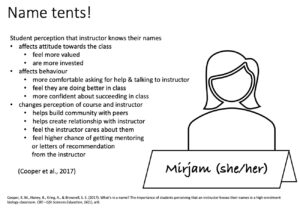
How to show students that they matter, inspired by episodes of two of my favourite podcasts
Yesterday I went on a lovely after-work walk with one of my favorite podcasts (check them out, all highly recommended!), and I want to mention two podcast episodes Iistened to recently,…
